Information is essential. We need it to make informed decisions as we navigate life. But, we must challenge ourselves to think deeper about the media we consume. Misinformation and disinformation campaigns are increasingly everywhere and we must be prepared to identify falsehoods, verify truths, and protect ourselves from too much news.
 As a media maker and content consumer, I know firsthand how fatiguing the news cycle can be. From the endless comments, push notifications, social feeds, emails, and more. Yet, it is important that we stay informed. So how can you stay in the loop while also maintaining your sanity?
As a media maker and content consumer, I know firsthand how fatiguing the news cycle can be. From the endless comments, push notifications, social feeds, emails, and more. Yet, it is important that we stay informed. So how can you stay in the loop while also maintaining your sanity?
1. Evaluate your sources.
Think about where you get your news from. Why do you follow a particular news source? Did you deliberately choose those outlets or were they given to you?
Many of us inherit our media preferences and information sources from our family, friends, and peers. If our parents always watched a certain local news channel, we are more likely to watch that station because it is familiar, not always because it is the best or most informative.
When evaluating your sources, ask yourself what it is you are seeking. Do you want the most accurate and concise coverage of an issue? Or, do you want information that agrees with you and your personal worldview? When you are taking stock of the media’s perspective, be sure to reflect on your own.
Also, consider the messenger. For instance, if all the news you read comes from reporters of one race, gender, socioeconomic background, etc., you are not getting multiple perspectives on an issue or story.
Depending on our environment, our choice in news can be limited – particularly in rural and low-income communities where internet access and diverse media outlets can be more scarce. Take note that whatever you are hearing, it is not the entire truth and search for other sources of information to broaden your awareness.
2. Consider the format.
There are many ways to consume news and information today: TV, radio, newspaper, social media, text messages, word of mouth, yard signs, posters, mailers – you name it. We are the most connected humans in human history. We have the most access to the most information, ever. So, it is important to understand how we receive information is just as, if not more, significant than the core message.
Marshall McCluhan, a Canadian philosopher and communications theorist in the 1960s famously wrote and said “The medium is the message,” meaning how we communicate has a profound impact on our comprehension of the world. How we get our news can shape what we take from it.
For example, when newspapers dominated the landscape, audiences received the news when the paper was delivered. Now, as soon as something happens, it is shared via social media and can be recapped, remixed, and modified a thousand times over within minutes. The significance of the information can be distorted, amplified, or reduced because of where it is coming from.
My advice is to diversify your news sources. So if you get most of your news from social media, try finding a podcast, listening to a radio story, picking up a newspaper, or visiting specific news sites. You can also try following a variety of online sources to fact-check what you are learning.
3. Get offline, go outside.
This is by far the best advice I can give. So much of our perspective of the world is shaped by our media consumption that we rarely take time to go outside and see how things are actually happening. This is especially important in a time of civil unrest. News coverage, social media posts, and second-hand accounts of protests and rallies can skew how events transpired. Though we can’t be everywhere at all times, especially during a pandemic, we ought to do our best to get a firsthand account of what is happening around us.
If the news tells you it is raining while you are inside sucked into your phone, you’re more likely to believe it than if you went outside to confirm for yourself. This analogy and advice do have a flaw, and that is, what we perceive is not always the truth, because our perception is limited.
So, just because you saw something a certain way, does not mean you have all the facts to come to an absolutely clear conclusion. Your perspective is just that, yours, and learning the perspectives of others helps you build a more accurate representation of what is happening. Don’t just go outside physically, but get outside mentally as well.
There is so much more to be aware of in this time, but my hope is that we all think a little bit deeper about how and why things are the way they are. Mass media have a major influence on our worldview and it is incumbent upon us to vet, verify, and challenge what we see to better understand.
If you are interested in following a hyperlocal news source, check out NOISE (North Omaha Information Support Everyone). We are a news organization that is committed to improving media access and literacy for a more informed society. You can check us out at noiseomaha.com or @noiseomaha on Facebook, Instagram, and Twitter.
An artist, journalist, and social entrepreneur, Dawaune Hayes brings people, ideas, and resources together for positive change. In 2018, he joined forces with The Omaha Star, Nebraska’s oldest Black-owned newspaper, and 101.3 FM Mind & Soul Radio to develop NOISE.




